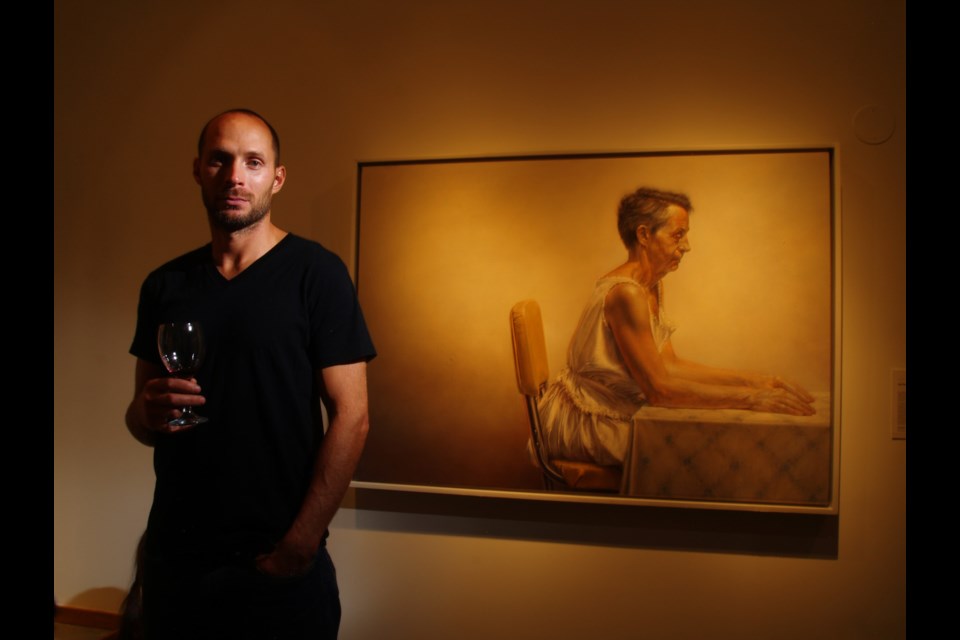Jay Senetchko is a storyteller.
It’s how he sees his mission as an artist, and it’s what drives him to continue making art.
“I think narrative is essential in connecting with people,” he says. “We are a storyteller species.”
Senetchko was always the self-described “kid that drew,” but art wasn’t his first career choice. Rather, he propelled himself from university soccer at the University of Alberta into a professional soccer career with the Edmonton Drillers and Montreal Impact. Once he hit his mid-20s, however, he came to the realization it was time to do something about making art a real part of his life.
He moved from Edmonton to Vancouver to study animation at Vancouver Film School. Senetchko soon decided animation wasn’t for him and started on what he calls “a long series of expensive and time-consuming experiments” before finding his artistic niche in figurative art.
He’s been exhibiting professionally since 2002. It was through a recent exhibit, The Course of a Distant Empire, at Winsor Gallery that he came to the attention of Teena Martin, executive director of Burnaby Arts Council, as she was putting together Luminescence III.
Though his large-scale figurative work was too big for Deer Lake Gallery, Senetchko came forward with a piece he’d made for a previous show with the Phantoms in the Front Yard collective at the Gordon Smith Gallery in North Vancouver. That show, Over the Counter Culture, explored the issue of addiction in artistic form.
“I took the slant that there’s a number of different ways you can become addicted to substance – being addicted to work, being addicted to sex, being addicted to any particular form of ideological thought,” he says. “I saw society, if you can think about society being personified, as having an addictive personality.”
The piece in question, The Apotheosis of Evasion for Men and Women, is created from the glass of old bourbon bottles, inset into an old wine crate, using mirrors and lights to reflect the images of a male and female figure – and their skeletons behind - in a stained-glass effect.
Senetchko describes it as a “reflection on mortality” and a “meditation on life and death” – then laughs good-humoredly at the idea that his art only looks at the big questions.
“I still do believe that art has the capacity to change people’s lives, minds, thoughts for the better,” he says.
Don’t take that to mean, however, that Senetchko thinks art should live in some ivory tower.
Quite the opposite, in fact. Senetchko isn’t a fan of the fact that the movement towards conceptual art in the late 20th century – which tried to undo centuries of art being “aristocratic” in nature – ended up creating a new intellectual artistocracy instead, turning out decades of art that remained inaccessible to all but a select few theoreticians.
“This new form of art ended up being even more aristocratic and removed from the common rung,” he says. “Now it wasn’t understandable on an aesthetic level or even on an intellectual level.”
It’s important to him to create art that remains visually and aesthetically accessible to viewers, whether they approach the work with a doctorate in art or with no artistic background whatsoever.
“I want people to be visually interested in what I am presenting,” he says.
There also needs to be a narrative – it is, after all, a story – and there needs to be command of the technical aspects of work; the perspective, composition and colour theory that affect how people perceive the work, visually and psychologically.
And, yes, he says, there should still be a message.
“I think theory is a huge part of work in terms of an idea that is worth talking about; a concept, a theme,” he says.
For Senetchko, art should all be wrapped up in personal history - “they like to see the person that is telling the story in that work” - and also grounded in the broader history of art, society, religion and philosophy. Add to all of that the idea that art should also be topical – not in as obvious a way as a political cartoon, but referencing an idea or issue that speaks to the time and place in which it was created.
“It speaks through those different layers to different levels of knowledge and engagement with art,” he says.
Which means that whether a viewer’s reaction to Senetchko’s piece was a simple, “Hey, that’s cool” or a philosophical reflection on life, his artistic aim has been achieved.
And, after all these years of creating, he still finds a reason to continue the less-than-smooth path that is an artist’s to follow.
“What I’ve consistently come back to is, there’s still a productive way I can contribute back to the greater social body doing this. I keep being able to answer the question of why I should be doing this,” he says. “I do believe it is a very fortunate thing to be able to do.”



